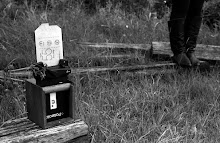Ever since I can remember my parents have always tried to instill a sense of art and culture in my life. I guess this is one of the reasons I became an art history major, and I don't regret it for a second. I remember a few very specific experiences that I've had in art museums with my parents. I remember being shuffled through the Louvre to see the Mona Lisa at age 10, and being quite unimpressed. I remember seeing Modigliani paintings for the first time and my father asked me why I thought the eyes were painted without pupils, I believe I was 16 and it was my second visit to Europe, I didn't have an answer for him until I studied modern art in college. I've been lucky to see so many different works of art in my life and to have parents that care so much about art, which is why I'm very excited to tell you the story of me and Gustav Klimt.
 |
| Gustav Klimt, Thalia and Melpomene, 1898 |
Before I gazed into the pupil-less eyes of Modigliani's women in Europe I was able to experience a little bit of Europe right here in Los Angeles, California. In 2006 LACMA had a special exhibition of five paintings by Gustav Klimt from the collection of Adele Bloch-Bauer (Klimt's portrait of her is probably his second-most well-known painting). I don't think I had been exposed to Klimt before this time, and I remember my mother being especially excited about seeing the works. If I recall the situation today as I remember it from six years ago, she rushed me to LACMA one day after school just to see these paintings. We spent quite a bit of time in the relatively small room, and I could see that my mother was completely taken by seeing these works in person, and that she was happy to be sharing the experience with me. To me this was one of the major stops on my art education timeline.
After seeing these paintings I did some further research on Klimt, and I fell in love with his works. They were quite different from anything else I had seen and so uniquely beautiful that I couldn't imagine passing up any opportunity to see his works in person. I was very excited to learn that an exhibition of his drawings would be up at the Getty this year, and after seeing it I can tell you that it is worth your time.
.+Goldfish.jpeg) |
| Gustav Klimt, Goldfish, 1902 |
Looking at Klimt's drawings is a completely different experience from looking at his paintings. His paintings are generally very beautiful, compositionally refined, and full of intimate details and color choices. His drawings, on the other hand, are rough, full of life, and they carry a different kind of beauty than his paintings. Many of the sketches are accompanied by a small reproduction of the paintings they were made for, and in a few cases I found the drawings to be more full of life and intrigue than the paintings.
 |
| Gustav Klimt, Kiss to the Whole World, part of the Beethoven Frieze, 1902 |
In some cases, the drawings are the only things that exist because the paintings have been destroyed. One of my favorite Klimt paintings falls under this category, Medicine. The painting was completed in 1901, and unfortunately was destroyed by the Nazis in 1945, along with a few other beautiful paintings by Klimt from around the same time. The painting demonstrates a surrealist ideal of convulsive beauty, which I wrote about briefly in my art history thesis. The ideal comes from Andre Breton and his second novel, Nadja (1928) in which he states, "Beauty will be convulsive or will not be at all." In my mind this idea deals with the juxtaposition of something being so beautiful that in order to balance out the beauty one needs to create a dark environment for the beauty to reside in. This basic idea is present in many of the sketches shown in the exhibit, and it may be a default visualization because of the medium, but I feel it is the way in which the artist has chosen to create the quick and breathing compositions we now see before us.
 |
| Gustav Klimt, Medicine, 1901 |
This exhibit is one of the better organized exhibits that I have been to recently in the Los Angeles area, and I highly recommend you visit before it closes.
The Getty Center is open Tuesday-Sunday, at 10 am every day. The Klimt exhibit is open until September 23rd. http://www.getty.edu/art/exhibitions/klimt/








